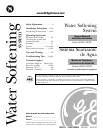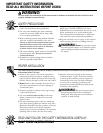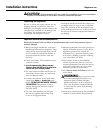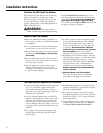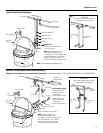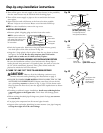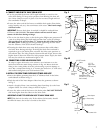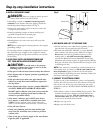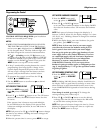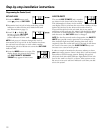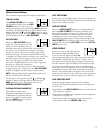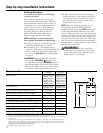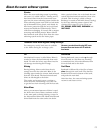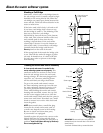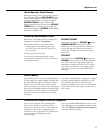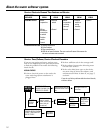
6
Fig. 3A
Fig. 3B
Fig. 3C
IN
OUT
Turn bypass valve
upside down to
connect to floor
level plumbing
Valve body
inlet or outlet
Bypass valve
(push all the way in)
Clip
END
VIEW
Clip
Outlet
Inlet
O-ring seal goes into
the outer groove only.
The clip snaps into the
inner groove (see below).
Bypass
valve
SIDE
VIEW
Step-by-step installation instructions.
■ Turn off the gas or electric supply to the water heater, in the possibility
that the water heater may be drained while draining pipes.
■ Turn off the water supply to pipes to be cut and drain the house
water pipes.
■ Open both hot and cold faucets at the lowest location possible.
Release 2 clips at rear of cover. Rotate cover forward and lift up.
NOTE: For easier installation, remove the top cover.
1. INSTALL BYPASS VALVE
• Remove plastic shipping plug and wire from valve outlet.
• Push the bypass valve (lubricate o-ring seals with silicone grease)
into both ports of the valve as shown in Fig. 3A.
• Snap the 2 large plastic clips in place, from the top, down as shown
in Figures 3A and 3B. Be sure they snap into place. Pull on the
bypass valve to make sure it is held securely in place.
2. MOVE THE SOFTENER ASSEMBLY INTO INSTALLATION POSITION
Be sure the installation surface is level and smooth. Sharp objects
under the tank may puncture it. If needed, place the tank on a section
of 3/4″ thick (minimum) plywood. Then, place shims under the
plywood as needed to level the softener.
3. PLUMB “IN” AND “OUT” PIPES TO AND FROM SOFTENER
CAUTION: Observe all of the following cautions as you
connect inlet and outlet plumbing. See illustrations on page 5.
• BE SURE INCOMING HARD WATER SUPPLY IS DIRECTED TO THE
SOFTENER VALVE INLET PORT. If house water flow is from the left,
use a plumbing crossover as shown in Fig. 1, page 5. If the house water
flows up from the floor level, turn the bypass valve upside down as shown
in Fig. 3C.
• If making a soldered copper installation, do all sweat soldering before
connecting pipes to the bypass valve. Torch heat will damage plastic
parts.
• When turning threaded pipe fittings onto plastic fittings, use care not
to cross-thread.
• Use pipe joint compound on all external pipe threads.
• Support inlet and outlet plumbing in some manner (use pipe hangers)
to keep the weight off of the valve fittings.
NOTE: Be sure the turbine and
support are firmly in place in the
valve outlet. Blow into the valve
port and observe the turbine
for free rotation.
Turbine
Valve outlet
Turbine shaft
and support
Drain Fitting



